Event Horizon
jULY 3RD, 2021 - SEPTEMBER 11th, 2021
project room GALLERY
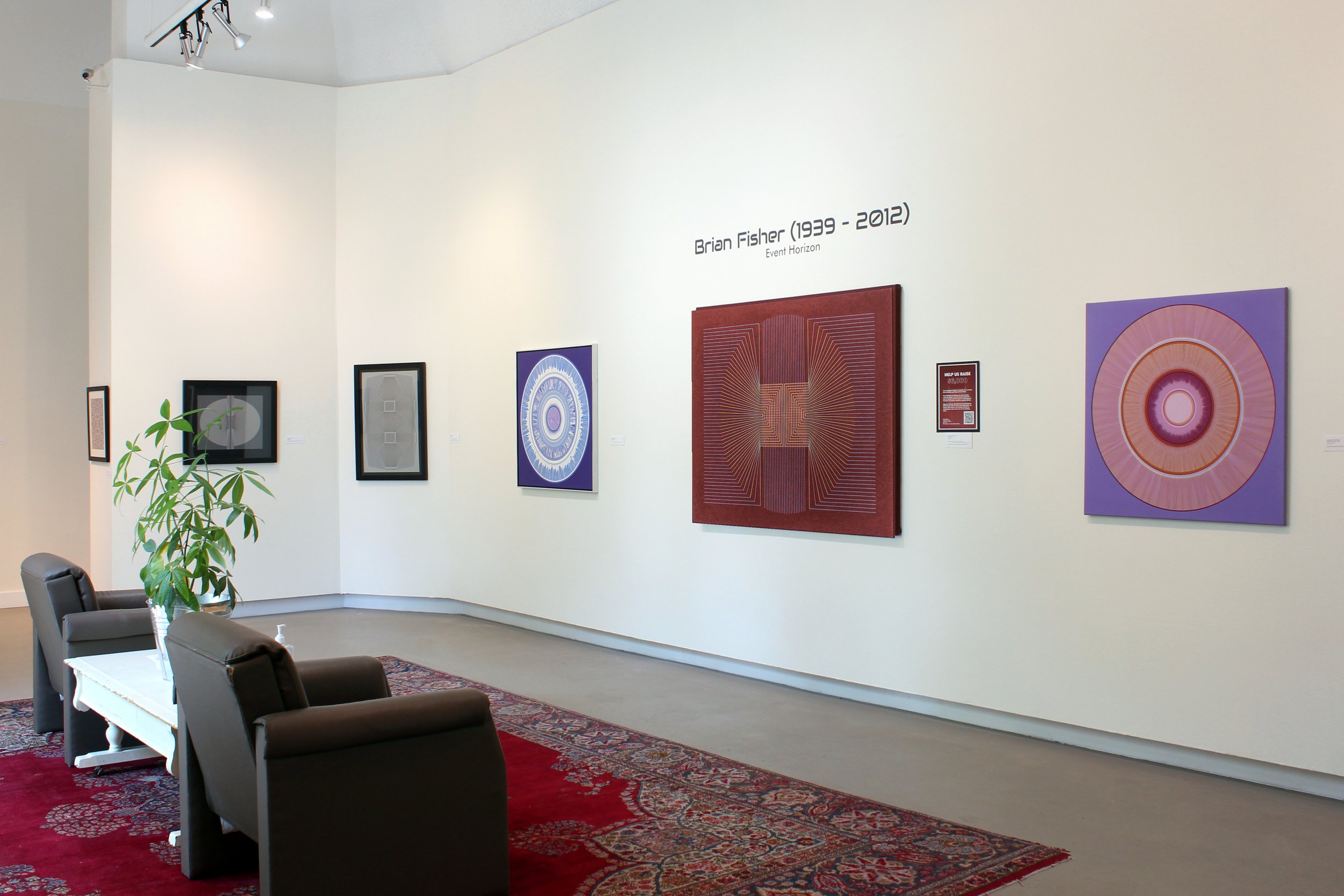
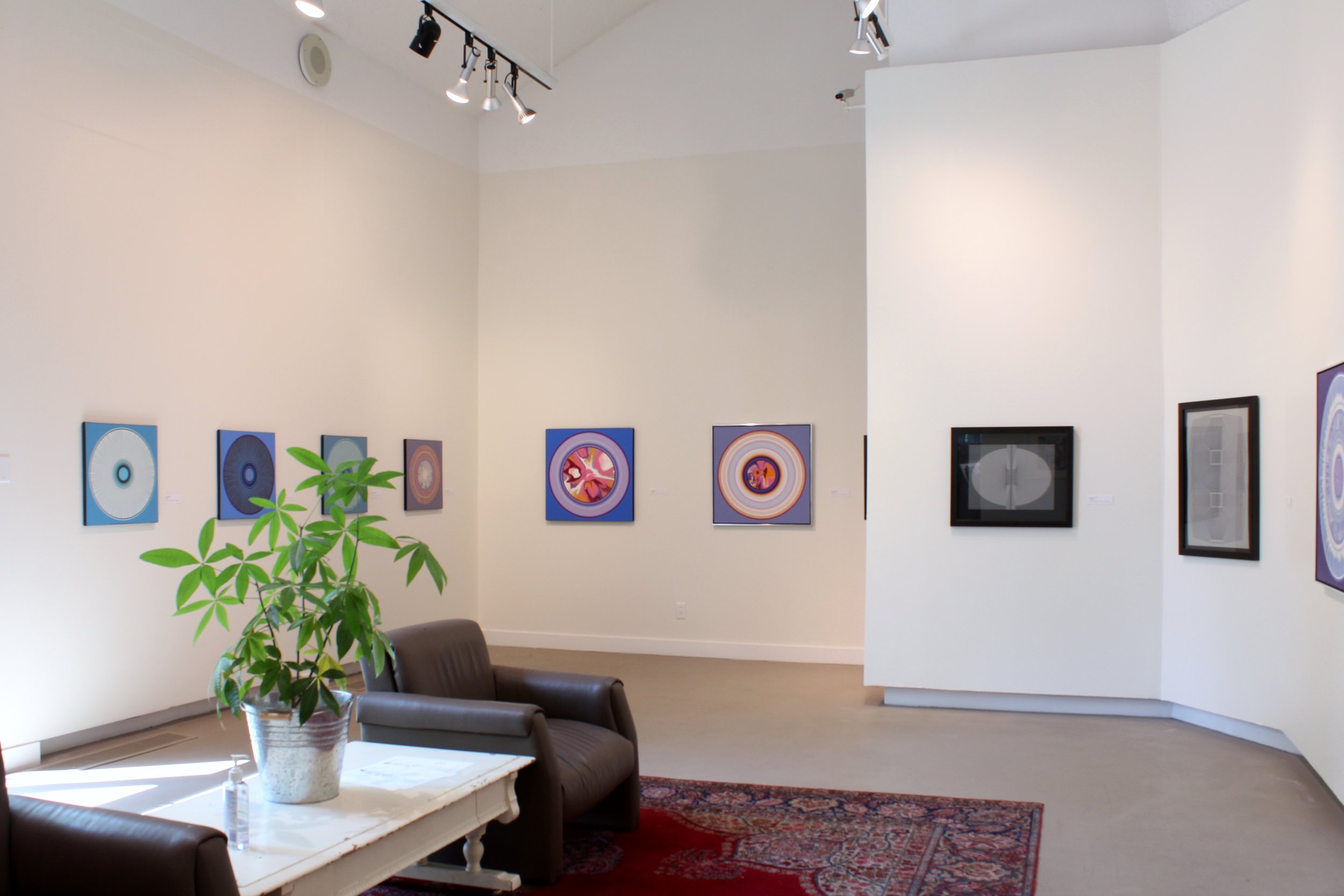
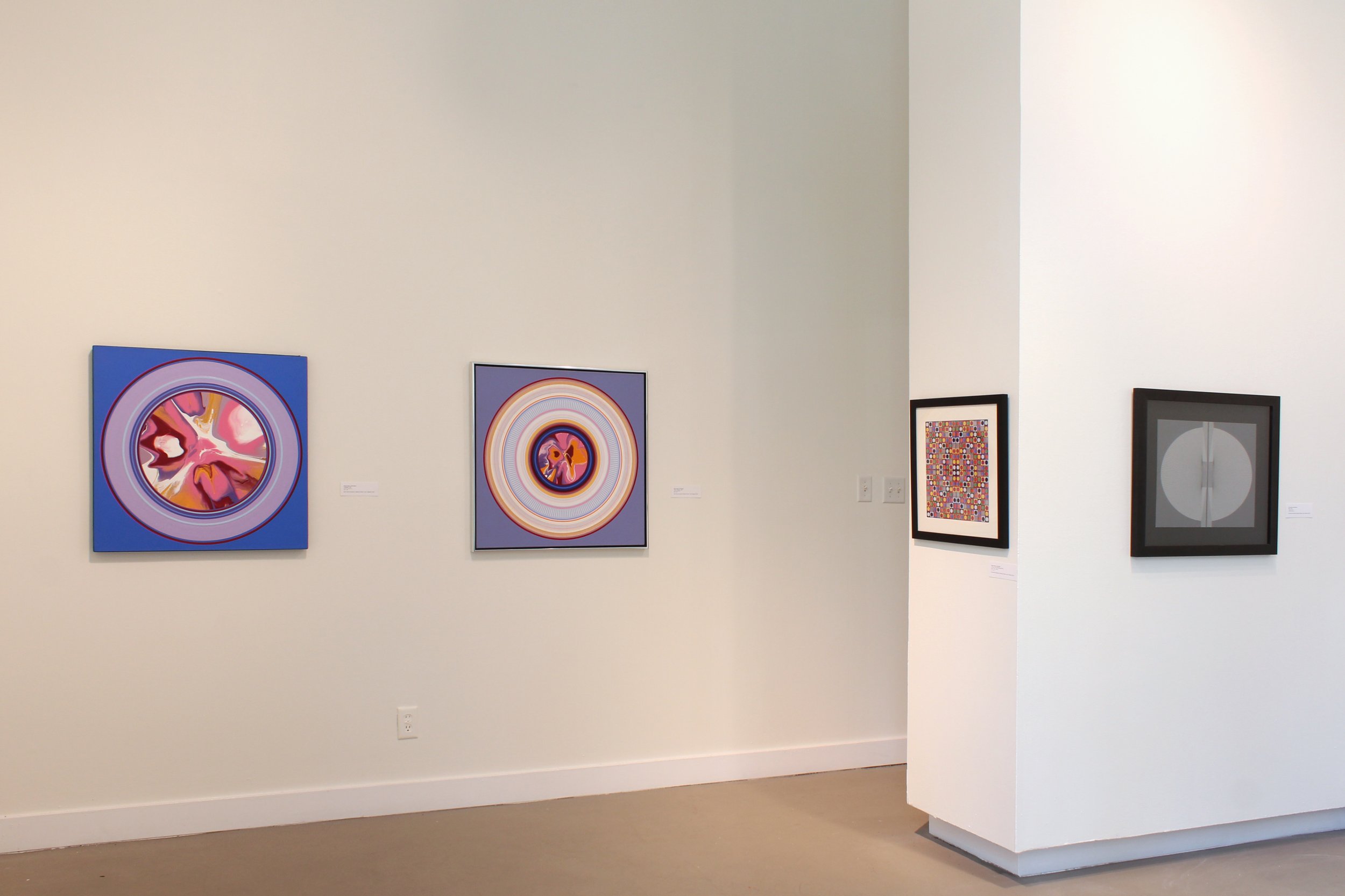

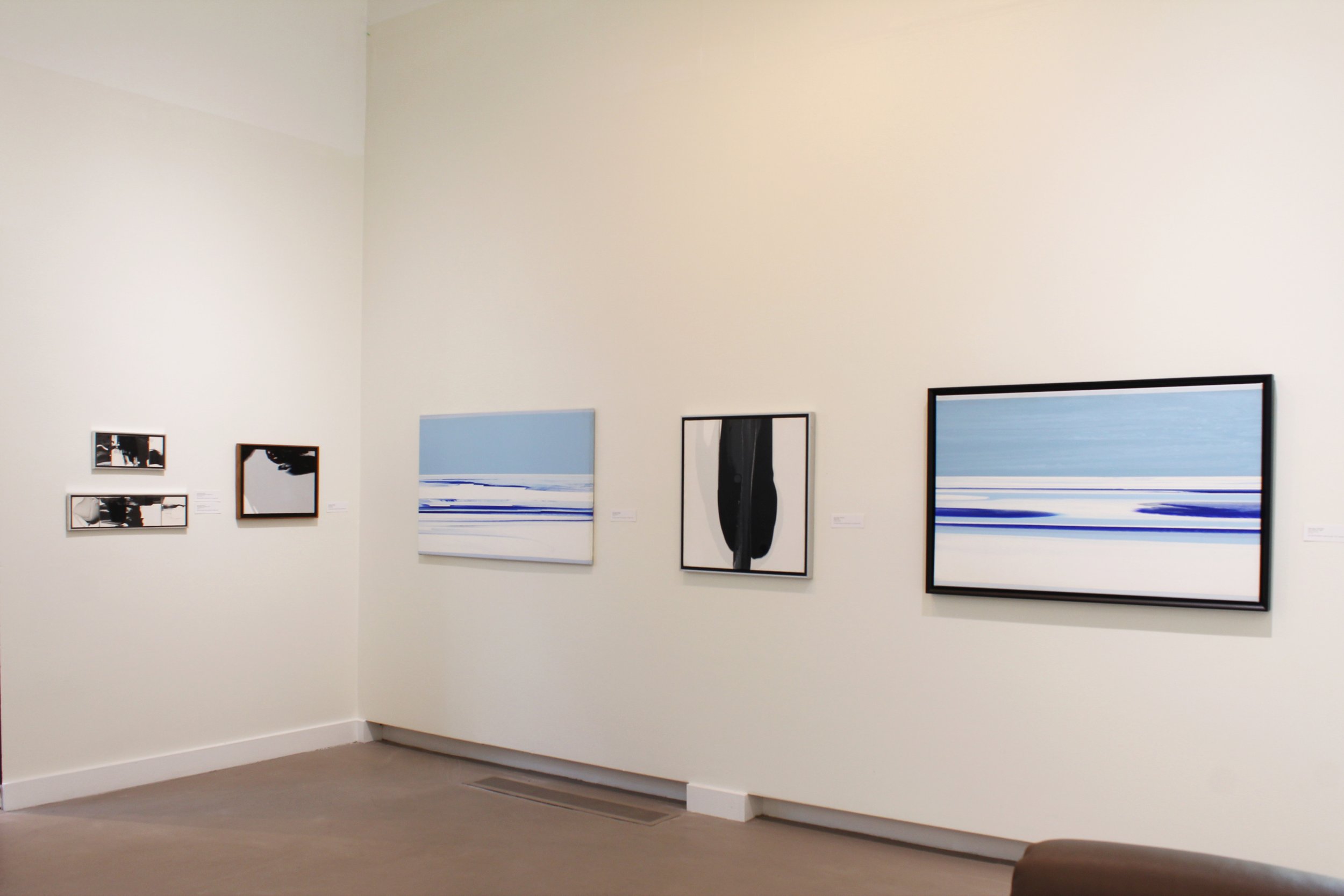
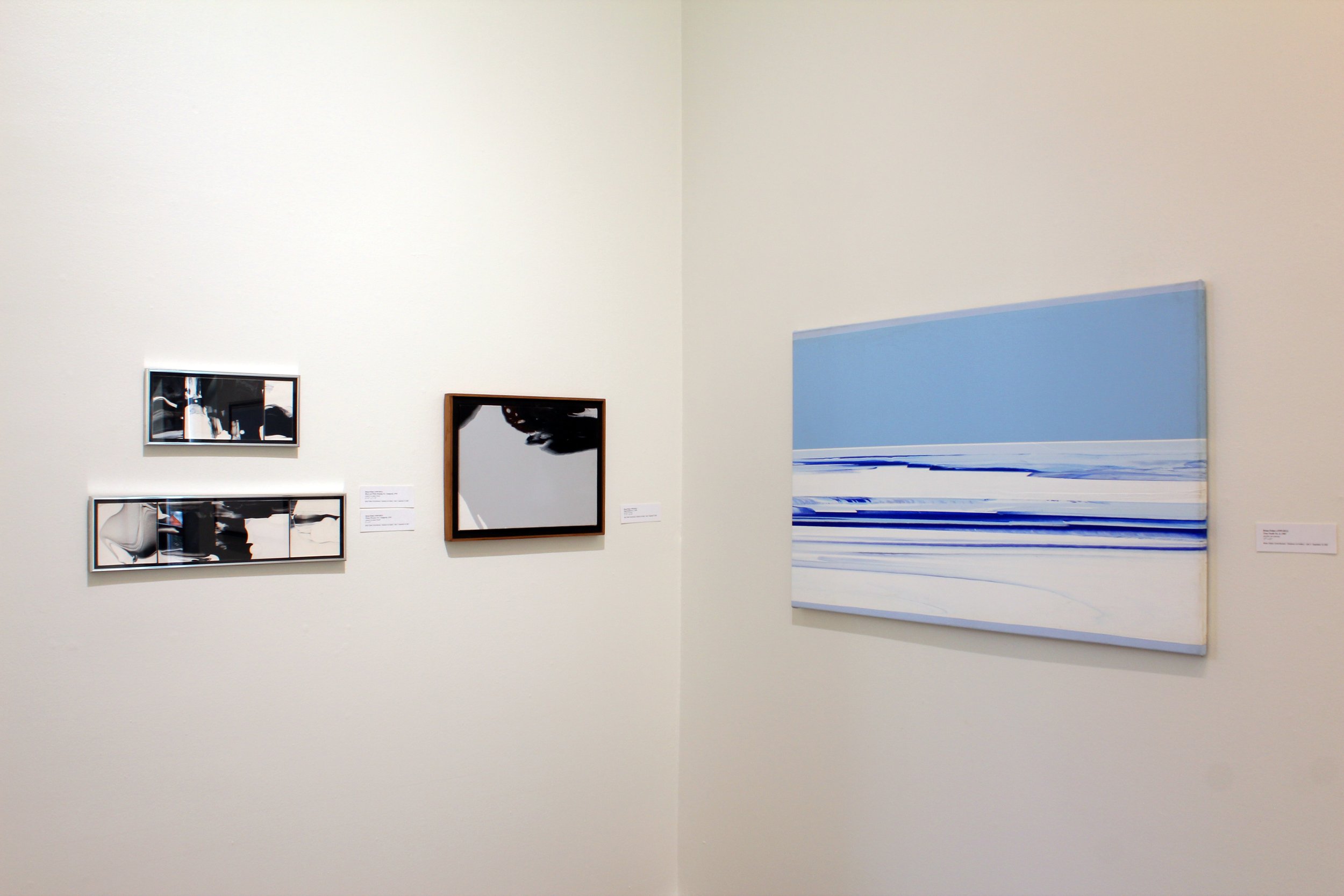
Featured Artist:
Brian Fisher (1939-2012)
Brian Fisher was born in Uxbridge, England in 1939, moving to Canada with his family as a child. He first studied fine arts at the University of Saskatchewan's Regina College under Arthur McKay, Roy Kiyooka, Ron Bloore, and Kenneth Lochhead.. His paintings were also influenced by the Russian Constructivist style that emphasized a sense of movement. One writer remarked on Fisher's work: “... he combines modern abstract design and ancient philosophy. A blend of the past and present, his art rests on mathematics, the most ancient of sciences and one of the main foundations of philosophy.” Leaving Regina in 1958, Brian along with his friend Claude Breeze moved out to the west coast for the first time and to further their studies at the Vancouver School of Art. In 1960 Brian was awarded a two year Canada Council grant which allowed him to return to Europe with his partner Carol Itter to take courses at the Academia de Belle Arti in Rome.
It was an exciting time to be in Europe, where the full impact of contemporary abstraction was making itself felt in the form of exhibitions featuring the work of Tapies, de Stael, Wols, Karel Appel, Fontana, Burri, Mark Tobey and Mark Rothko who was the subject of a major exhibition down at the British School in Rome, for a young artists from the "new' world this expanded worldview not only took his breath away but deeply impacted his own practice.
Reflecting back on this time his friend Peter Kreet wrote: “Our mornings were taken up drawing various overweight models in the life drawing class, and then apart from excellent lectures in the afternoon the days were ours. We were fortunate to have a philosopher in the form of Prof. Reviasici who had been a close friend of Benedetto Croce during the 1930s. He was very distressed at the direction the world was taking, the urban development, electrical wires clouding out the Roman sky.The Academy was full of students from all over the world, Americans, Germans, even Iceland was represented, so there was a wide range of viewpoints from which to draw.
Brian, as I remember him, was a very methodical person, who thought about problems from a somewhat mathematical perspective. Looking back it was a quality he remained faithful too for most of his life. At the time he was a great fan of Mark Tobey, and his calligraphic impulses, reference to Chinese brush painting. Like many young people at the time we were both influenced by Zen and its simplicity of form. The exhibition we held together in 1963 at Il Bilico, exemplifies his approach at the time. He would talk a lot about his teachers in Vancouver who had influenced him, Roy Kiyooka and Ron Bloore's white paintings, that he felt spelt out the future of art.
Returning to Canada in 1963 Fisher taught at the University of British Columbia in Vancouver and at the Vancouver School of Art (1964-1965). Following his first solo exhibition at the New Design Gallery in Vancouver in 1965, Fisher garnered national attention when his work was shown in the Canadian Pavilion at Expo '67 in Montreal and in Perspective '67, the Canadian Centennial exhibition at the Art Gallery of Ontario. Fisher's most important Canadian commission was a mural for the Montreal International Airport at Dorval, which has long been regarded as "one of the most successful marriages of art and architecture in Canada." Brian would go on to teach sessionally at the University of Calgary (1969), the Banff Summer Workshop (1973) and the Okanagan School of the Arts (1977), returning to Saskatchewan to teach at the University of Regina (1976-1983).
In an Artist’s Statement published by the Surry Art Gallery in 2001 Brian Fisher reflects his early work writing: “My intention during this period (1965-70 approx.) was to define mass and space as much as possible through the use of line, not line as circumscription but as a directional component in building the mass: the symmetrical termination of each line defined the divisions between mass and space, with a minimum of explicit boundary. The moiré patterns resulting from these overlaid line systems were a serendipitous surprise, revealing, as they did, unanticipated curvatures which animated the mathematical rigidity of the “formal” approach to art. Paradox. In a broader context, these images reflected my desire to somehow illustrate the holistic nature of the universe, as I perceived it then.
Since that time, my form has undergone many changes but I still cling to that original notion. Through my life-long interest in cosmology, specifically Quantum Theory, I am coming to believe that it is perception itself which shapes reality. What better arena in which to prove this speculation, (if proof is possible), than painting? Without a methodology, there are no means with which to build. Without an ideal, there is no foundation. Without an aesthetic, there is no grace.”
In an article published in Galleries West Magazine previewing a memorial exhibition at the Winchester Modern Gallery in Victoria Portia Priegert writes: “Notable enough to be one of 24 artists profiled in William Withrow’s 1972 book, Contemporary Canadian Painting, Fisher has fallen from public awareness, perhaps because he remained in Australia until his death in 2012. Withrow, a former director of the Art Gallery of Ontario, offered unstinting praise. “In the same way that the solution to a complex mathematical problem has connotations of beauty, the intricacy of Fisher’s work fascinates the viewer,” he wrote. “Not surprisingly, he is himself interested in avant-garde theories in both mathematics and sciences, as well as in Zen and the occult.” Withrow traced Fisher’s genesis through instructors at the University of Saskatchewan, including Art McKay, Ronald Bloore and Roy Kiyooka, who awakened Fisher’s interest in Eastern spirituality.
Some of Fisher’s work shares formal affinities with Op Art, particularly that of British painter Bridget Riley, who’s now enjoying a resurgence of interest amongst a younger generation of artists. Fisher recommended spending at least half an hour with one of his paintings to focus the mind and enter a reflective state. Thus, his work is less about optical play and more about art as a path to open spaciousness within.” Looking at the later works Portia continues” Brian Fisher’s paintings seem to evoke the vortex of a sorcerer’s ball or, perhaps, a sci-fi portal into a faraway galaxy. Colours swirl and blend, candy-floss pinks mixing with red, white, violet and ochre, all with a sedimentary quality suggesting the drift and flow of water. Fisher created the marbled core by pouring acrylic paint on a wet canvas and letting the colours run together as the entire substrate spun on a wheel. Once dry, he added a series of precise concentric rings, making a mandala of sorts.”
Fisher would go on to be included in solo and group exhibitions at institutions such as the Musée des beaux-art de Montréal, the University of British Columbia Fine Arts Gallery, the Art Gallery of Greater Victoria, the National Gallery of Canada, the Vancouver Art Gallery, the University of Manitoba, Bau-Xi Gallery (Toronto and Vancouver), and the Art Gallery at York University. Fisher’s work is included in the collections of Canada Council Art Bank, the National Gallery of Canada, the Art Gallery of Ontario, the Musée des beaux-art de Montréal.
Brian met and married his second wife, Joy Paull, while teaching at the University of Regina and in 1983 they moved to Joy’s home country of Australia with their two children. Brian would maintain ties to Canada visiting friends 2006 and 2009, before passing away in October, 2012, in Adelaide, Australia.
Paul Crawford, Curator


